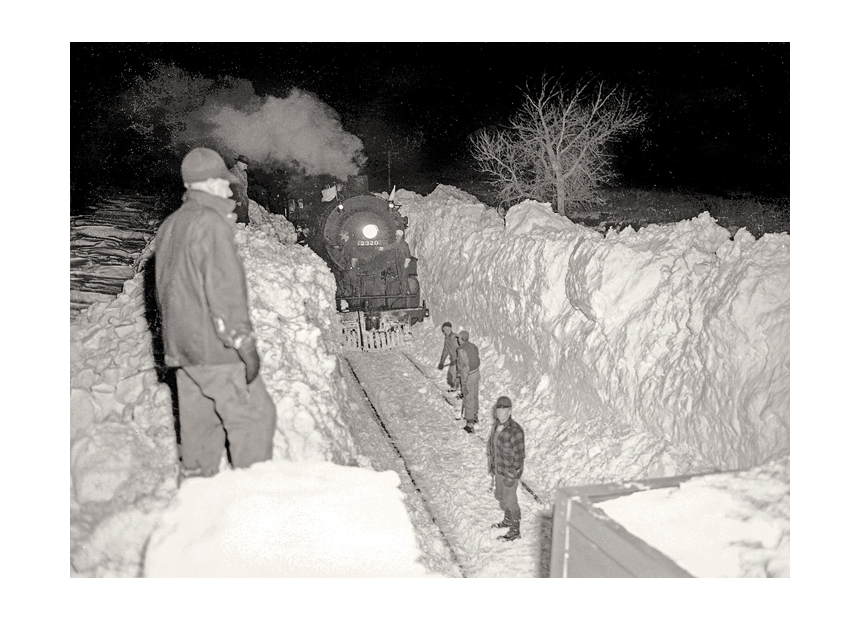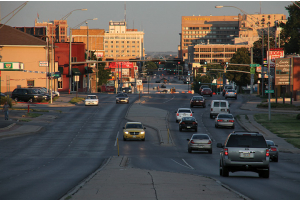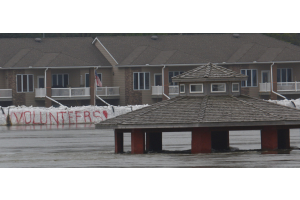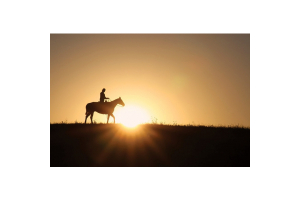Winter of 1948-1949

Powerful railroad locomotives were no match against repeat blizzards in 1948 and 1949.
Nebraska State Historical Society
(This story originally appeared in the January/February 2019 NL issue of Nebraska Life Magazine)
Memories melt over the course of 70 years, but the Winter of 1948-1949 looms large in the minds of those who endured it. Twenty Nebraskans and thousands of livestock animals perished. Roads that drifted shut in mid-November remained impassable for five long months. So much stifling, smothering snow fell from November to April that survivors’ memories of individual storms blur into one monstrous meteorological event, the Blizzard of 1948-1949.
Nebraskans were enjoying a mild autumn when thunderstorms turned to sleet and snow near Sidney on Wednesday, Nov. 17, 1948. The weather was beautiful near Pierce, where Don and Millie Zimmer were hunting pheasant, quail, squirrels and rabbits. “I remember it being warm and sunny,” Millie said. “We headed to Smokey Green’s Bar for a glass of Hamm’s beer. When we left for home hours later, so much snow was falling that a friend with a pickup had to take us home.”
Winter reached O’Neill by 8 a.m. on Thursday. The extreme southeast corner of Nebraska received only rain, but even Lincoln and Omaha had snow by the weekend.
Willis Schlote was tending the family farm when the first flakes began falling. “Dad worked in Bloomfield and I did the chores,” Schlote said. The 18-year-old walked several times that winter to meet his father halfway between the farm and town. “Dad wasn’t a big man, but he carried enough groceries to fill my sled,” Schlote said.
Winds estimated at 60 mph crippled Burwell and Spalding with 8- to 12-foot drifts. Unharvested cornfields were buried until spring. Northeast Nebraska and the Sandhills bore the brunt. Albion received 20 inches of snow. Cedar County got 24 inches. Residents lost electricity for days. Six Nebraskans died in this opening salvo, but winter’s worst was yet to come.
Sixteen inches of fresh snow was an unwelcome gift on Christmas Eve. A storm moving from southwest to northeast across Nebraska days later dumped another 2 feet on Bassett. Temperatures climbed into the 30s on New Year’s Day, but this calm before the storm quickly evaporated.
A churning torrent spawned in Oklahoma grew hundreds of miles wide, crossed into Kansas and began grinding east. The counterclockwise-spinning storm had a hurricane-like eye of calm weather in its center. Rain poured along its southern edge, while frigid temps, wind and snow socked the north. Then the freak of Mother Nature abruptly changed direction and set its sights on Nebraska.
Communities, farms and ranches from Grand Island to O’Neill were getting hammered when the storm took another strange twist. The raging cyclone backtracked 200 miles west and sentenced Western Nebraska to a second helping. Winds clocked at 75 mph combined with 41 inches of the white stuff to leave Chadron isolated for weeks. People ventured out when winds abated and boredom settled in. Denelda Bruns-Larson remembers a treat waiting at home after exploring drifts taller than telephone poles south of Hartington. “Dad made the most of the situation by making snow ice cream,” Bruns-Larson said. “We ate a lot of it that winter.”
President Harry Truman issued a disaster declaration after another 36 inches of snow fell during the last week in January. With communities buried, railroads stalled, cattlemen separated from their millions of animals, and thousands of Nebraskans trapped without electricity as food and fuel dwindled, Operation Snowbound was born.
For the rest of the story see the January/February 2019 issue of Nebraska Life.
Subscribe to Nebraska Life Magazine and receive thoughtful stories and beautiful photography featuring travel, history, food, nature and communities of Nebraska.
(This story originally appeared in the January/February 2019 NL issue of Nebraska Life Magazine)





The information below is required for social login
Sign In
Create New Account